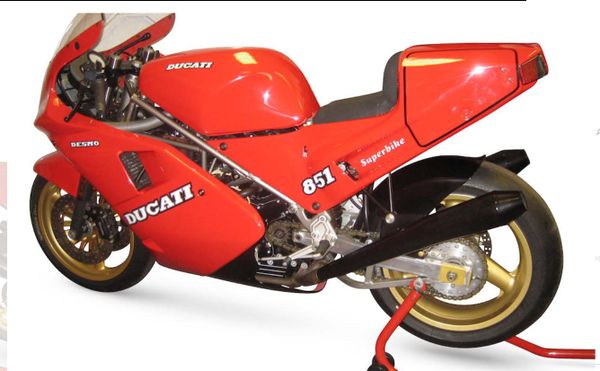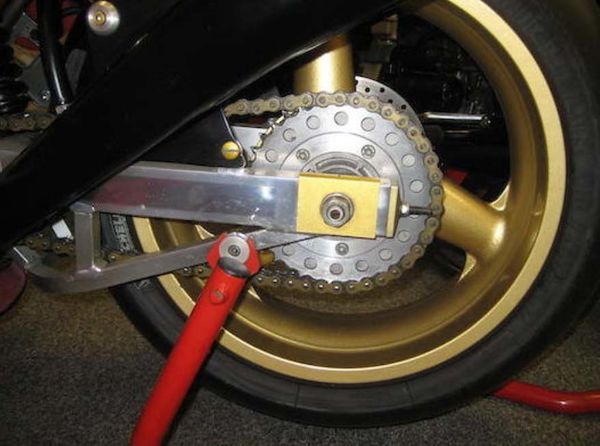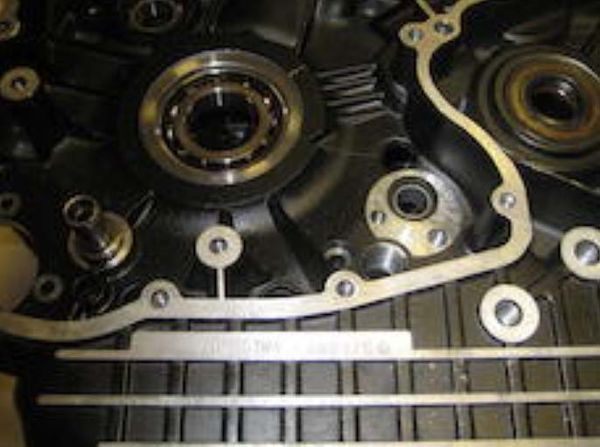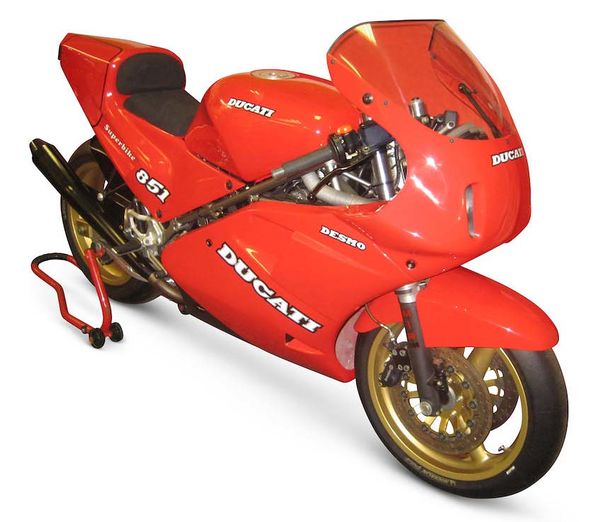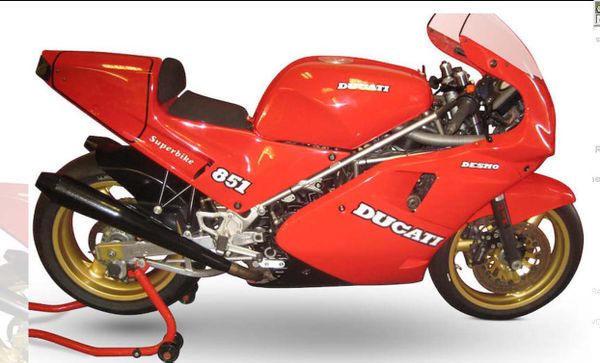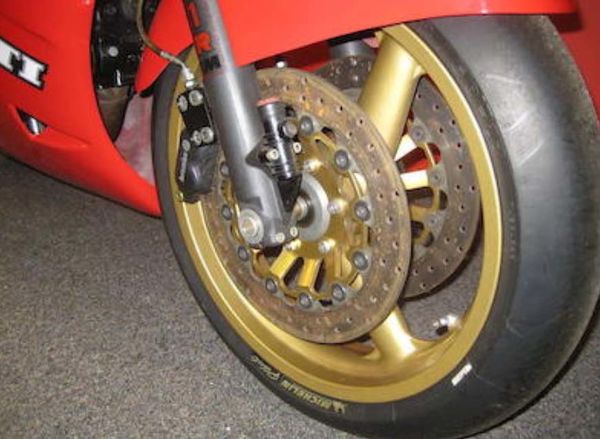Ducati 851 Superbike
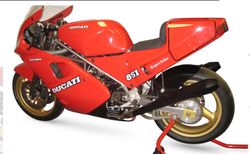 |
|
| Racing Bikes Ducati 851 Superbike | |
| Class | Racing |
|---|---|
| Weight | |
| Manuals | Service Manual |
Photos[edit | edit source]
Overview[edit | edit source]
Ducati 851 'Lucchinelli Replica' Racing
Ducati kicked off the inaugural World Superbike Championship
with victory in the opening round at Donington Park in April 1988, when works
rider Marco Lucchinelli took the honours aboard an over-bored and race-kitted
version of the Ducati 851 Superbike. Since then the Italian company has won more
WSB races and championships than any other manufacturer.
In developing the original 851, engineer Massimo Bordi
created one of the finest motorcycle power plants ever. By the
mid-1980s, Ducati's existing air-cooled 4-valve twins were
approaching the end of the development so Bordi started with a
clean sheet in creating their water-cooled, 8-valve,
fuel-injected successor. Ducati's trademark desmodromic valve
actuation system, which closes the valves mechanically rather
than relying on springs, was retained, as was the 90-degree
angle between the cylinders. Wrapped around this outstanding
engine was a frame, consisting of an intricate trellis of
straight tubes, whose design has since become standardised
throughout the Ducati range.
Ducati lost no time in announcing a limited edition of Marco's bike for 1989
- the 'Lucchinelli Replica' - and ever since then the factory has pursued a
policy of offering limited edition, higher-specification variants of the
standard model. Like the works racer the Replica gained its extra 37cc capacity
by a 2mm overbore which, coupled to an increased compression ratio, revised
Weber fuel injection and race exhaust, helped raise rear wheel horsepower to a
claimed 118bhp. Good enough for the works racers, the road bike's standard
tubular-steel trellis frame was retained, though wheels went up to 17" diameter
and bigger Brembo brake discs were specified.
Source
